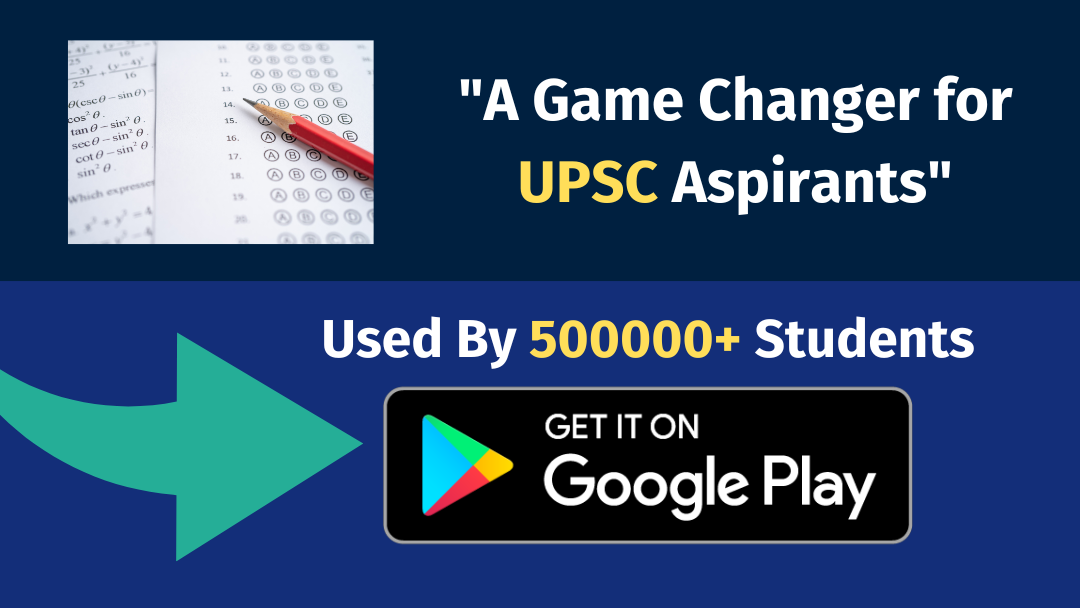Today’s Current Affairs: 1st April 2025 for UPSC IAS exams, State PSC exams, SSC CGL, State SSC, RRB, Railways, Banking Exam & IBPS, etc
Table of Contents
NITI NCAER States Economic Forum Portal:
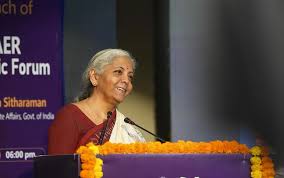
Amid complaints by opposition-ruled states that they faced discrimination in the sharing of resources, the Union Finance Minister will launch the “NITI NCAER States Economic Forum” portal.
- It was developed by NITI Aayog, in collaboration with the National Council of Applied Economic Research (NCAER).
- It is a comprehensive repository of data on social, economic, and fiscal parameters, research reports, papers, and expert commentary on state finances for a period of about 30 years from 1990-91 to 2022-23.
- The portal has four main components, namely:
- State Reports – summarising the macro and fiscal landscape of 28 Indian States, structured around indicators on demography, economic structure, and socio-economic and fiscal indicators.
- Data Repository – offering direct access to the complete database categorised across five verticals, viz. Demography; Economic Structure; Fiscal; Health and Education.
- State Fiscal and Economic Dashboard – showcasing graphical representations of key economic variables over time and provide quick access to raw data through a data appendix or additional information through summary tables.
- Research and Commentary – draws on extensive research on State finances and critical aspects of fiscal policy and financial management at the State and national levels.
- The portal will facilitate an understanding of macro, fiscal, demographic, and socio-economic trends; easily accessible data and a user-friendly format; and will also address the ongoing need for consolidated sectoral data in one place.
- It will further help in benchmarking the data of each state against that of other States and the national figures.
- It will also provide a forum for policymakers, researchers, and others interested in alluding to the data for informed debates and discussions.
- The portal will serve as a comprehensive research hub, offering a wealth of data and analytical tools for in-depth research studies.
- By leveraging historical trends and real-time analytics, users will be able to track progress, identify emerging patterns, and formulate evidence-based policies for development.
Abel Prize 2025:
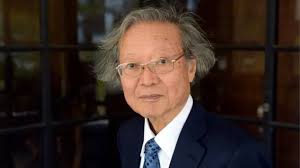
The prestigious Abel Prize for mathematics was recently awarded to Japanese mathematician Masaki Kashiwara, a specialist in algebraic analysis, representation theory, and sheaf theory.
Abel Prize 2025:
- It was awarded to Japanese mathematician Masaki Kashiwara for his fundamental contributions to algebraic analysis and representation theory, in particular the development of the theory of D-modules and the discovery of crystal bases.
- His work has not only helped solve some hard problems that have been around for a long time but also opened new avenues for research by connecting areas that were not known to be connected before.
- For instance, Kashiwara discovered crystal bases, which allowed mathematicians to replace complex calculations with much simpler graphs of vertices connected by lines.
Abel Prize :
- It recognises pioneering scientific achievements in mathematics.
- It is named after Norwegian mathematician Niels Henrik Abel (1802-29), who in his short life made pioneering contributions to multiple fields.
- The prize was established by the Norwegian Parliament in 2002, on Abel’s 200th anniversary.
- The Abel Prize is awarded and administered by the Norwegian Academy of Science and Letters on behalf of the Norwegian government.
- The recipients are chosen by an expert committee appointed by the Academy under the advice of the International Mathematical Union (IMU) and the European Mathematical Society (EMS).
- First awarded in 2003, the Abel Prize is often considered to be an equivalent of the Nobel Prize, which does not have a category for mathematics. It has been modelled as such.
- The prize includes a monetary award of 7.5 million kroner (roughly USD720,000) and a glass plaque designed by Norwegian artist Henrik Haugan.
Tribhuvan Sahkari University:
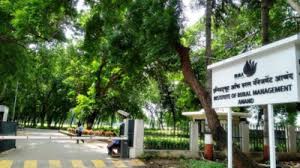
The Lok Sabha recently passed a bill to set up the Tribhuvan Sahkari University in Anand, Gujarat, that is named after Tribhuvandas Patel, who was one of the pioneers of the cooperative movement in India and instrumental in laying the foundation of Amul.
- Tribhuvandas Kishibhai Patel is an Indian independence activist, lawyer, and politician.
- A follower of Mahatma Gandhi, he is regarded as the father of the cooperative movement in India, most notably in the Kaira District Co-operative Milk Producers’ Union in 1946, and the Anand Co-operative movement.
- He was born in 1903 to a farming family in Gujarat.
- He was very much influenced by the philosophy and principles of Mahatma Gandhi.
- He was totally involved in the various movements of Mahatma Gandhi, like civil disobedience, rural development, and the drive against untouchability, alcoholism,
- He was the President of Harijan Sevak Samiti from 1948 to 1983.
- In Nasik in 1930, he was jailed for the first time for the salt satyagraha.
- He was further imprisoned in Visapur in 1930 where he took an oath to dedicate his life for the benefit of the masses at large.
- In 1946, guided by the wisdom of Morarji Desai and inspired by Sardar Vallabhbhai Patel, Tribhuvandas formed the Kaira District Cooperative Milk Producers’ Union Ltd. (KDCMPUL) as a protest against the exploitation of local farmers by Polson Dairy.
- The basic approach adopted by Tribhuvandas Patel was first to establish milk cooperatives in the villages. These co-operatives were literally the “base” of the entire venture.
- He insisted that each village co-operative should be open to all milk producers in the village regardless of caste, creed, or community.
- He invited Dr. Verghese Kurien to KDCMPUL, who later spearheaded the White Revolution in India.
- He was instrumental in establishing the Gujarat Cooperative Milk Marketing Federation (GCMMF), National Dairy Development Board (NDDB), and Institute of Rural Management Anand (IRMA).
- During his lifetime he held various positions and received innumerable recognitions and awards for his outstanding leadership and social service. Some of these awards are:
- Ramon Magsaysay Award from the Philippines in 1963 as a recognition towards his community leadership,
Padma Bhushan from the Government of India, 1964, towards Social Service.
Non-Alcoholic Fatty Liver Disease: In News
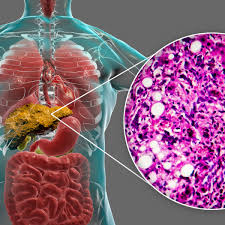
Ranchi is set to become the first district in Jharkhand to implement a large-scale campaign for the screening and management of non-alcoholic fatty liver disease.
- NAFLD, now known as Metabolic dysfunction-associated steatotic liver disease (MASLD), is the term for a range of conditions caused by a build-up of fat in the liver.
- This buildup of fat is not caused by heavy alcohol use. When heavy alcohol use causes fat to build up in the liver, this condition is called alcohol-associated liver disease.
- Early-stage NAFLD does not usually cause any harm, but it can lead to serious liver damage, including cirrhosis, if it gets worse.
- Having high levels of fat in your liver is also associated with an increased risk of serious health problems, such as diabetes, high blood pressure and kidney disease.
- If you already have diabetes, NAFLD increases your chance of developing heart problems.
- Nonalcoholic fatty liver (NAFL) and nonalcoholic steatohepatitis (NASH) are types of NAFLD.
- NASH is the severe form, which can cause cirrhosis and liver failure. It can also cause liver cancer.
- NAFLD is more common in people who have certain diseases and conditions, including obesity, and conditions that may be related to obesity, such as type 2 diabetes.
- NAFLD can affect people of any age, including children.
- There’s currently no specific medication for NAFLD.
- Doctors recommend weight loss to treat
- Weight loss can reduce fat, inflammation, and fibrosis in the liver.
- Treatment may also be recommended for associated conditions (high blood pressure, diabetes, and cholesterol) or complications.
Arctic Council:

The Arctic region has become a global flashpoint due to rising geopolitical tensions, climate change, and resource competition.
- The Arctic is governed by the Arctic Council, an intergovernmental body formed in 1996 through the Ottawa Declaration.
Member States (8): - Canada, Denmark (Greenland), Finland, Iceland, Norway, Russia, Sweden, and the United States.
- These countries control land territories and have rights over resources within their Exclusive Economic Zones (EEZs).
- Permanent participants: Six Indigenous groups representing Arctic inhabitants.
- Observers (Including India):
- Thirteen countries (e.g., India, China, Japan, UK, France).
- Thirteen intergovernmental organisations.
- Twelve non-governmental organisations.
- All decisions require the consensus of the eight Arctic States and consultation with permanent participants.
- The Northeast Passage (also called the Northern Sea Route) runs along Russia’s Arctic coastline, connecting Europe and Asia.
ISRO’s CARTOSAT-3 Images : Myanmar Earthquake
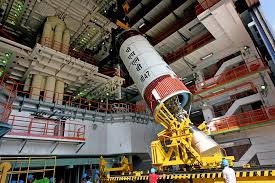
ISRO’s CARTOSAT-3 images reveal earthquake damage in Myanmar.
- ISRO’s Earth observation satellite, CARTOSAT-3, captured high-resolution images of the destruction caused by the 7-magnitude earthquake that struck Myanmar on March 28, 2025.
- The post-disaster imagery (March 29) was compared with pre-event data (March 18) to assess the damage in Mandalay and Sagaing.
- CARTOSAT-3 is a third-generation agile advanced Earth observation satellite developed by ISRO.
- It replaces the IRS (Indian Remote Sensing) series and has high-resolution imaging capabilities.
- Launched aboard the Polar Satellite Launch Vehicle (PSLV-C47).
Polar Orbit : SpaceX
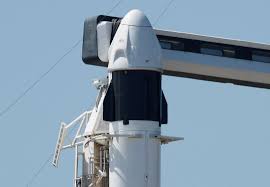
SpaceX successfully launched a private astronaut crew on a historic polar-orbiting mission aboard a Falcon 9 rocket from NASA’s Kennedy Space Center in Florida.
- A Polar Orbit (PO) is a type of Low Earth Orbit (LEO) that ranges between 200 km to 1,000 km in altitude.
- Unlike equatorial orbits, satellites in a polar orbit travel from one pole to the other rather than from west to east.
- A deviation of up to 10 degrees from the exact North-South trajectory is still classified as a polar orbit.
- Polar orbits allow satellites to cover the entire Earth’s surface over time as the planet rotates below them.
- These orbits are widely used for Earth observation, climate monitoring, and reconnaissance missions.
- The Fram2 mission is the first human spaceflight to use this trajectory, making it a groundbreaking event in space exploration.
- Unlike traditional missions that follow an equatorial orbit, this mission will orbit Earth from pole to pole.
- Fram2 is SpaceX’s sixth private astronaut mission, further solidifying its dominance in the global private spaceflight sector.
- It highlights the growing role of private players in space exploration, reducing reliance on government agencies like NASA.
- The mission uses the Crew Dragon capsule, a reusable spacecraft developed by SpaceX with NASA funding.
- SpaceX has now conducted 16 crewed missions using this capsule, proving the success of reusability in reducing spaceflight costs.
Carbon dioxide (CO₂) Lasers : Technique To Detect Radioactive Materials:
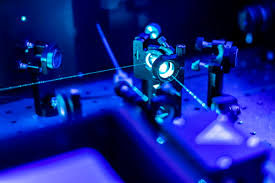
Physicists in the US have demonstrated a novel technique to detect radioactive materials remotely using carbon dioxide (CO₂) lasers.
- The first CO₂ laser was developed by Indian-American scientist C.K.N. Patel.
- It is a four-level molecular gas laser that operates using vibrational energy states of CO₂ molecules.
- Highly efficient, producing high-power continuous or pulsed output.
- A CO₂ molecule consists of one carbon atom at the center and two oxygen atoms on either side. It vibrates in three independent modes:
- Oxygen atoms move simultaneously towards or away from the fixed carbon atom.
- Carbon and oxygen atoms vibrate perpendicular to the molecular axis.
- Oxygen atoms move in one direction, while the carbon atom moves in the opposite direction.
- The laser transition occurs between vibrational energy states of CO₂ molecules.
- Energy is transferred from excited nitrogen (N₂) molecules to CO₂, achieving the population inversion necessary for laser action.
Aryna Sabalenka Wins Miami Open 2025:
World No. 1 Aryna Sabalenka reinforced her dominance in women’s tennis by clinching her first Miami Open title, defeating Jessica Pegula 7-5, 6-2 in the final. With this victory, she secured her 19th WTA title, including eight WTA 1000 titles and three Grand Slam championships. Sabalenka’s impressive performance throughout the tournament, without dropping a set, further solidified her status as the top-ranked player in the world.
Renault to Acquire Nissan’s Stake in India Manufacturing Unit:
Renault Group has announced that it will acquire the remaining 51% stake in Renault Nissan Automotive India Private Ltd (RNAIPL) from Nissan Motor Corp, making it the sole owner of the manufacturing facility in Chennai, India. This move comes after a 2023 agreement in which Renault and Nissan jointly invested $600 million to develop six new models for the Indian market.
The Great Conciliator A Book On Lal Bahadur Shastri:
Sanjeev Chopra’s latest book, The Great Conciliator: Lal Bahadur Shastri and the Transformation of India, offers a comprehensive look at India’s second Prime Minister, a leader often overshadowed in history books. Chopra, a historian and former IAS officer, explores Shastri’s political, social, and administrative journey, from his early life in Mughalsarai to his nation-building initiatives, including the formation of the Border Security Force (BSF) and the iconic slogan “Jai Jawan, Jai Kisan.”
Naini Lake’s Facing Depleting of Water Levels:
Naini Lake, a significant landmark in Nainital, is facing a critical decline in water levels, hitting a five-year low of 4.7 feet, raising concerns about the potential for drinking water scarcity during the summer. The lake, which supplies 76% of Nainital’s water demand, is experiencing pressures from both natural and human-induced factors. A combination of decreasing rainfall, reduced snowfall, unplanned development, and pollution has worsened the lake’s condition. Experts highlight the need for a holistic approach to conservation, focusing on natural rejuvenation and sustainable development practices.
